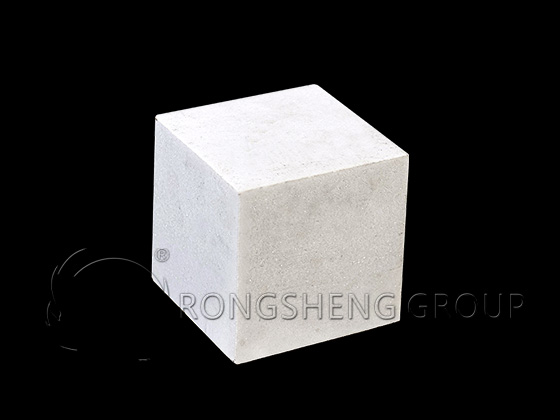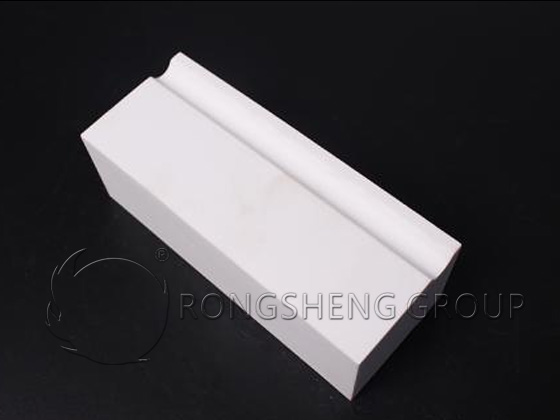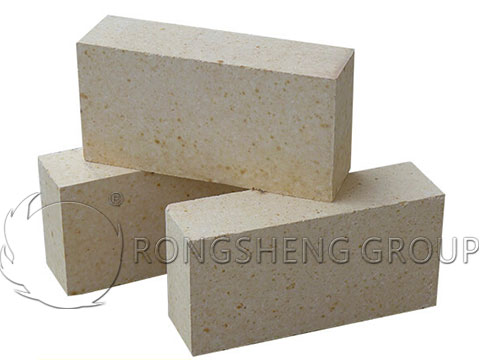Alumina Bricks Properties
Different types of alumina bricks (such as β-alumina bricks and hollow alumina sphere bricks) may differ in their specific properties. For example, β-alumina bricks offer better resistance to alkali vapor corrosion, while hollow alumina sphere bricks excel at being lightweight and providing excellent thermal insulation. RS Alumina Bricks Manufacturer supplies high-quality alumina bricks. Contact RS Factory for free samples and quotes.

Alumina Bricks Have the Following Properties
High-Temperature Resistance
Alumina bricks typically have a refractoriness exceeding 1900°C, maintaining stable physical and chemical properties in high-temperature environments. They are suitable for use in high-temperature industrial furnaces and melting furnaces, where they can withstand long-term high temperatures without deformation or damage.
High Mechanical Strength
They possess high compressive and flexural strengths, reaching approximately 250 MPa at room temperature and maintaining a strength of approximately 150 MPa at 1000°C. They can withstand mechanical and thermal stresses at high temperatures.
Good Chemical Stability
They are chemically stable and highly resistant to corrosion from acids, alkalis, salts, and other chemicals, especially at high temperatures. They are particularly resistant to corrosion from a variety of molten metals and chemicals. They are suitable for applications in chemical and metallurgical industries, where corrosion resistance is critical.
Low Thermal Conductivity
With low thermal conductivity, they offer excellent thermal insulation properties, effectively reducing heat transfer and lowering energy consumption. They are often used as insulation layers in high-temperature furnaces to improve energy efficiency.
Thermal Shock Resistance
High thermal shock resistance allows it to withstand rapid temperature changes without cracking or damage. Suitable for equipment subject to frequent startups and shutdowns or large temperature fluctuations.
High Purity and Low Impurity Content
High-purity alumina bricks (e.g., Al₂O₃ content ≥98%) have low impurity content and greater chemical stability, making them more resistant to chemical reactions and corrosion at high temperatures.
Good Electrical Insulation
With excellent electrical insulation properties, they can be used in the manufacture of high-temperature electrical insulation components, such as spark plug insulators and electronic component substrates.
Why are Alumina Ceramics Both Insulators and Conductors?
Common sense suggests that thermal insulation and thermal conductivity should be two distinct entities. For example, cotton is insulating and can be made into cotton-padded clothes, while iron is conductive and can be used in frying pans. The reverse is not true. However, in the real world of refractory materials, we see a different phenomenon: the same material can be used for seemingly opposite purposes: insulation and thermal conductivity. This is the case with alumina ceramics. Alumina ceramics can be made into insulating bricks for high-temperature kilns and heat sinks for electronic products like LED lights.
To answer this question, we need to consider two aspects.
First, as the question above suggests, the thermal conductivity of materials does vary. The most typical example is the difference in thermal conductivity at different temperatures. Take alumina, for example. As the temperature rises, its thermal conductivity decreases. At 1200°C, its thermal conductivity is only about half that at 400°C. However, alumina’s thermal conductivity is not insignificant: at room temperature, it’s 20-30 W/m•K. Even if this decreases by more than half, it still leaves about 10 W/m•K, which is higher than the thermal conductivity of many materials. Therefore, this small change seems insufficient to explain why alumina can both insulate and conduct heat. A more convincing explanation is needed.
Therefore, we need to consider the second, and most important, aspect. Alumina’s ability to both insulate and conduct heat stems from structural changes. In other words, the internal structure of alumina ceramic differs when used as an insulator and a conductor.

When used as an insulator, alumina ceramic’s most significant structural characteristics are its porosity and low density. For example, when made into hollow alumina sphere bricks, the thermal conductivity of air is very low, and so is the thermal conductivity of hollow alumina sphere bricks. Some may ask, since air has a very low thermal conductivity, why bother incorporating air into the alumina material? This is because, while air has a low thermal conductivity, it cannot prevent thermal radiation. Just as the thermal conductivity of a vacuum is zero, heat from the sun still travels through it to Earth. Porous alumina blocks both heat conduction and radiation, effectively providing insulation and heat preservation. For example, a study reported that a type of alumina microporous ceramic has a density of only 0.6g/cm3, a porosity of 85%, and a thermal conductivity of only about 0.3W/m•K at 1200℃.
However, when alumina is made into thermally conductive ceramics, the requirements are completely different. The first requirement is high density—the higher the better. High density reduces pores, allowing the ceramic grains to bond tightly together, facilitating heat conduction. The second requirement is high purity. The higher the purity, the higher the thermal conductivity. For example, a ceramic with a 99% alumina content can achieve a thermal conductivity of ~26 W/m•K, while when the alumina content drops to 95%, the thermal conductivity drops to only ~20 W/m•K. This is because ceramics with low alumina content have a higher glass content, and glass has lower thermal conductivity, resulting in a lower overall thermal conductivity. Of course, cost is also a factor in practical applications. While high-purity alumina ceramics offer high thermal conductivity, they also come at a higher price. Therefore, alumina ceramics should be selected based on the product’s requirements, rather than simply pursuing high purity.
In addition to high purity and a dense structure, alumina ceramics used as heat sinks often have specific requirements for their external shape. For example, when making an LED heat sink, it often has a fin structure to increase the surface area and facilitate heat dissipation into the air, thereby achieving better heat dissipation effects.


